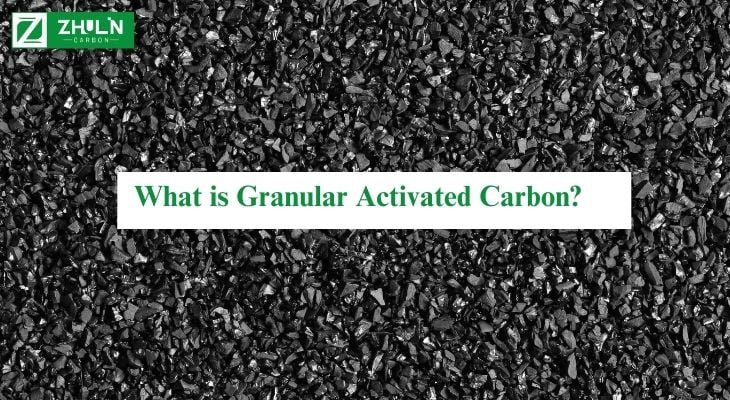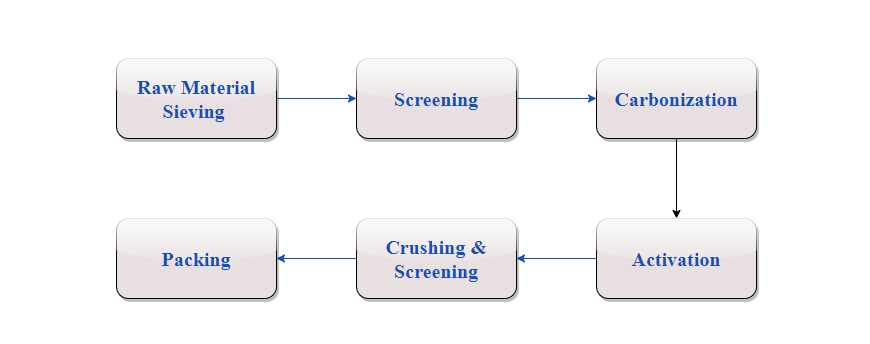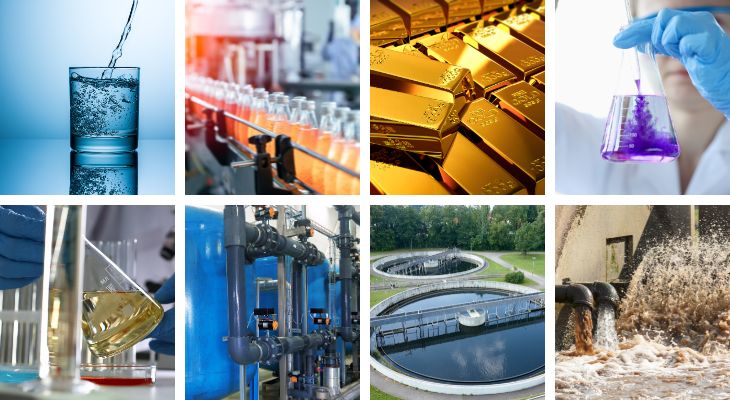
Granular Activated Carbon (GAC) is usually an organic carbon filtration media (wood, coconut shell or coal mine) used for water purification, often in fixed bed applications.
This article will delve into the preparation of granular activated carbon (GAC),Its unique physical properties, and the reasons behind its widespread application in air purification, water treatment, and other fields.
If you would like to learn more about granular carbon, please continue reading.
What is a GAC?
Granular activated carbon, commonly known as GAC, is a high-purity carbon characterized by a vast surface area, suitable for numerous liquid-phase and gas-phase purification applications.
The particle size of granules typically ranges from approximately 0.2 mm-0.5 mm, and the choice of “mesh size” depends on the material’s intended final use.
Activated carbon granules is a porous adsorption medium with an extremely high internal surface area.
The granules are generally made from materials such as coconut shells or coal. We primarily offer coal based granular activated Carbon and coconut shell granular activated carbon.
The selection of different raw materials may result in slight differences in purification performance, so the choice depends on specific application requirements.
How to Make Activated Carbon?
Usually, the manufacturing of granular activated carbon is roughly divided into: raw material screening, crushing, carbonization, activation, crushing and screening and packaging.

Granular Activated Carbon Benefits
Granular activated carbon, due to its high density, large surface area, low porosity, and the formation of large-diameter channels, reaching up to several tens of nanometers or more, can effectively remove substances from water, air, and waste gases.
The carbon particles are uniformly activated not only externally but also throughout the entire particle, resulting in excellent adsorption performance and consistent adsorption kinetics.
It exhibits high mechanical strength, reducing the generation of fines during backwashing and hydraulic conveying processes.
Applications of Granular Activated Carbon
Water Treatment
Granular activated carbon for water treatment is mainly used to remove pollutants in scenarios such as drinking water, industrial wastewater, sewage treatment, and swimming pools, including volatile organic compounds (VOCs), disinfection by-products (DBP), chlorinated compounds, chloramines, hydrocarbons, heavy metals, colloids, toxins, oils, and many other pollutants.
Food and Beverage
Utilized for removing impurities such as color and odor from food liquids, syrups, organic acids, amino acids, vitamins, alcoholic beverages, and glycerol.
Gold Recovery
Provides high iodine 6-12, 8-16 mesh coconut shell granular carbon for quick and efficient recovery of precious metals, releasing gold.
Solvent Recovery
Offers activated carbon for high-end air purification or various gas solvent recovery, such as gases like benzene and toluene.
Catalyst Carrier
Research and production of activated carbon as a catalyst and carrier have gained widespread industrial applications, serving as a carrier for catalysts degrading hydrogen sulfide and precious metal catalysts.
Gas Treatment
Activated carbon granules can remove pollutants in the air, such as toxic volatile organic compounds (VOCs) from air emission sources.
Mercury Removal
Used for the outstanding adsorption performance in purifying liquid natural gas.

Conclusion
Granulated charcoal, with its diversity and high efficiency, plays an irreplaceable role in cleaning air, purifying water sources, and promoting medical and industrial fields. It creates a healthier and cleaner living environment for us.
We hope that after reading this article, you have gained a deeper understanding of granular carbon.
If you have more curiosity in this field, feel free to delve into further research or share your thoughts and questions with us.
Customized Products and Services
- The iodine value, particle size, moisture, CTC, etc., can be determined as required to ensure that the product meets application needs.
- Provides water-washed grade, acid-washed grade, impregnated grade activated carbon, and carrier activated carbon.
- Products are certified by ISO, NSF, KOSHER, etc., ensuring compliance with your project procurement requirements.
FAQ
Granular Activated Carbon (GAC) and Powdered Activated Carbon (PAC) are two distinct forms of activated carbon with significant differences in terms of particle size, surface area, and applications.
GAC has larger particle sizes, typically ranging from 0.5-4 mm. The larger particles in GAC provide durability for various applications, allowing for reuse and regeneration. It is mainly used in water purification systems for the food and beverage industry, gas purification, and odor and color removal.
On the other hand, PAC consists of fine carbon particles usually below 0.18 mm (80 mesh). Its small particle size provides significantly higher surface area, allowing for rapid adsorption of contaminants in liquids and gases. PAC is widely used in water treatment, wastewater remediation, and pollution control in certain industrial processes.
The choice between GAC and PAC depends on specific requirements of the application, including desired adsorption characteristics, flow rates, and physical limitations of the treatment system.
Granular Activated Carbon (GAC) typically has a minimal impact on pH.
The pH of water is determined by the concentration of hydrogen ions (H⁺) and hydroxide ions (OH⁻). Activated carbon itself is neither acidic nor alkaline, so it usually does not cause a significant change in the pH of water during the treatment process.
However, it’s important to note that the nature of impurities adsorbed by activated carbon may indirectly influence the pH. In practical applications, any pH changes caused by the use of GAC are usually small and within acceptable ranges.
If pH adjustment is a critical factor in water treatment, additional measures may be needed, such as using alkaline or acidic substances, depending on the specific requirements of the treated water.